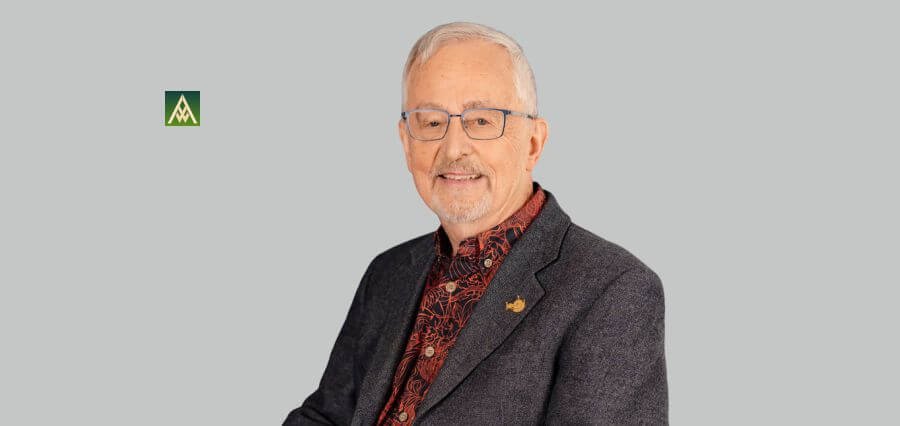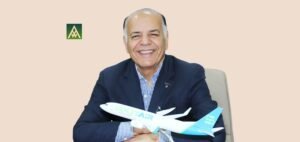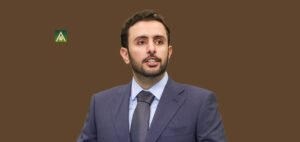Very few individuals in society have shaped a discipline while also leaving a substantial mark on society. One of these individuals is Dr. Richard C. Larson, also known as “Doctor Queue” for his work in queuing theory.
From the background of a strong academy to the hectic demands of city emergency rooms, Dr. Larson’s presence is felt, yet often unacknowledged. Over a more than half-century career that has transformed complex equations into life-saving tools, changed the way cities respond to disasters, and brought model-based thinking into both classrooms and the public square, he has confronted the challenges that arise when scientists and engineers encounter the complexities of the real world.
An interest in the movement of people and communication evolved into a lifelong mission, i.e. to employ mathematics not only to gain an understanding of the world but also to shape it for the better. By doing so, Dr. Larson has not only developed the field of operations research but has also made a difference in how we live, how quickly we can act, and how everyone making decisions can become a bit smarter.
Foundations: Early Curiosity and Independent Thought
Richard, who grew up in rural Pennsylvania after being born in Queens, Bayside, was given a childhood defined by both freedom and personal responsibility. His parents were ahead of their time in terms of parenting. They believed in letting their son choose his path early in life. That extended as far as an unconventional but instructive decision to hold off kindergarten for a year, a choice they left to him to make for himself.
His family then relocated to North Plainfield, New Jersey, and finally to Needham, Massachusetts. There, Richard graduated from high school and discovered his calling in science, especially physics, which he appreciated not only for its analytical approach but also for its promise of explaining the world by relying on what he describes as ‘just a few basic things.’
Finding OR – The Physics of Human Systems
Richard began his college career at MIT, where the guidance of Professor Al Drake had a profound impact on him. With guidance from Drake, he stumbled into the field of operations research (OR), which had the potential to enable him to apply science to social systems.
To Larson, OR, was the ‘physics of human systems,’ which included things like public transit, emergency responses, and healthcare. It made it possible to use analytical models to make institutions work more effectively. This framing just clicked for him. In 1969, he went on to teach at MIT, where he started on a career that bridged academia and the real world.
Mathematics That Saves Lives
One of Larson’s early achievements was the development of the Hypercube Queuing Model, which transformed the way cities allocate emergency services. Using the model, towns could also deploy and mobilize squad cars, fire engines, and ambulances, which would result in faster response times in emergencies. It was not a matter of abstract theory; lives were at stake.
One of the most powerful real-world examples came in New York City, where he was tasked with fixing a New 911 emergency response system. Residents previously had to memorize different emergency phone numbers depending on where they lived in the city. Even with the 911 system in place, technological problems persisted that hindered response times. Also lost were valuable seconds due to bottlenecks and overwhelmed dispatchers who struggled to answer the crush of calls pouring into the center.
Upon realizing these grave errors, the Commission on Fire Prevention and Control conducted an investigation. According to their analysis, they examined these problems and how they were impacting the response times of both the Fire Department and the Police Department.
To research these pain points, Larson collaborated with NYPD officers and city officials. Using data analysis and mathematical models, he assisted in the redesign of call routing and staffing, which significantly reduced delays. “I don’t have hard numbers, but I believe the enhancements resulted in lives saved,” Larson shares.
Bridging Academia and Society
Academic work, for Larson, was never intended to remain on the pages of journals. He wanted it to have a direct impact on systems and people. To achieve this, he co-founded ENFORTH Corporation and later Q.E.D., private consulting firms designed to bridge the gap between research and application.
He served as a consultant for the U.S. Postal Service on logistics, advised on the strategic efforts of the City of New York, and sat on influential national panels. At the government level, he has served on the Institute of Medicine’s Board on Health Sciences Policy and the Standing Committee on Emergency Management and Integration of Medical Response.
Each of these roles reaffirmed Richard’s conviction – ‘Research should not only be understood but also utilized.’
Leadership in Thought and Institution
Larson’s reach is institutional as well. He was president of the ORSA (Operations Research Society of America) from 1993 to 1994 and of INFORMS (Institute for Operations Research and the Management Sciences) in 2005. He was also the Co-director of MIT’s Operations Research Centre for more than 15 years.
His list of awards reflects this stature:
- 1972: Lanchester Award for “Urban Police Patrol Analysis”
- 1993: Elected to the National Academy of Engineering
- 2012 & 2015: Best Paper of the Year awards
- 2017: Inaugural Daniel Berg Lifetime Achievement Medal
- 2025 (anticipated): Albert Nelson Marquis Lifetime Achievement Award
Yet, Larson remains grounded. These honors are his milestones on a path committed to making an impact on society.
Reimagining Education: A Passion Project
One of the most profound change-makers for Larson has been educational innovation. He joined the Harvard community in 1965 as an assistant professor of education. He moved to MIT in 1974, becoming a founding director of the MIT Centre for Advanced Educational Services (CAES) in 1995 to promote technology-enabled learning. Under his tenure, CAES reached on-campus and remote learners across the globe, leading the way for what we refer to today as blended education.
Subsequently, Larson would go on to help found MIT BLOSSOMS (Blended Learning Open-Source Science or Math Studies), a collaborative project between himself, Professor Dan Frey, and Mary Elizabeth Murray, his wife. BLOSSOMS provides approximately 100 high-quality video lessons that are freely available online. Even before the days of popular platforms like Coursera and Khan Academy, BLOSSOMS was democratizing education.
Today, it remains an immensely popular tool for students and teachers worldwide, offering thousands of lessons in numerous languages, all for free.
A Life Partner in Purpose
Behind any great thinker, there is often a personal anchor, and for Larson, that would be his wife, Mary Elizabeth Murray. She wasn’t just a supportive wife, but an intellectual teammate who gave joint presentations at conferences and helped run educational projects.
They were a couple for 43 years, both professionally and personally. One of the highlights was a keynote address at a conference in Saudi Arabia, in which Mary spoke on “Model Thinking” to a crowd of over 400. Her words of wisdom and clarity deeply moved me and are one of many pledges of what they had in common.
The Power of Model Thinking
In 2023, Larson released ‘Model Thinking for Everyday Life’, an accessible guide that distils his decades of work into practical techniques. The book argues that structured, model-based thinking can help individuals make more effective decisions in all aspects of daily life, from personal choices to business strategies to public policy.
It is a fitting capstone to a career dedicated to the same principle – ‘We can make the world a better place, not by acting on an emotional impulse, but by thinking more clearly and acting more deliberately.’ Larson hopes the book will soon reach an even larger audience, as plans are underway to distribute it via additional platforms, such as Barnes & Noble.
Still Making an Impact
Although officially retired, Dr. Larson remains actively engaged in research and advocacy. He continues to:
- Serve as principal investigator of the MIT BLOSSOMS initiative
- Contribute to pandemic response modelling
- Advise on structural reforms in the U.S. education
- Participate in activities with the National Academy of Engineering
Far from slowing down, Larson’s retirement is simply a new phase of productivity—one with fewer lectures and more legacy building.
Lessons in Leadership and Learning
For Larson, leadership is a lived experience. “Lead by example, and others will follow,” he shares. He believes in sharing knowledge, nurturing talent, and creating tools others can use to succeed. While advising aspiring leaders, he shares,” Be authentic, take intellectual risks, and never stop learning.”
A favourite quote of his, from blues legend B.B. King, captures his philosophy:
“Any day I don’t learn something new is a wasted day.”
This spirit of continuous growth defines not only his career but also his character.
The Legacy of a Lifelong Problem-Solver
Dr. Richard is not only a scholar but also a systems thinker, a humanist, and an educator. His models have saved lives. His ideas have transformed institutions. His teachings touch thousands with their honesty. Turning everything from emergency response systems to the doors of learning open to students, his career is an inspiring example of thinking big and acting responsibly.
Although his resume may be lined with honors and titles, his impact on the way men think, question, and change may be his greatest legacy of all. In a world where so much is obfuscated and complex, Richard is a precious voice of clarity.
Read Also: Richard Larson The Author with a Heart for Animals




